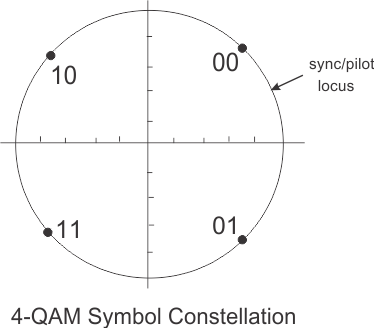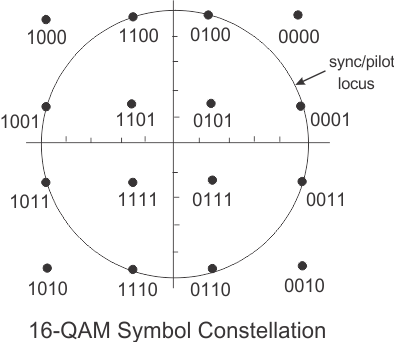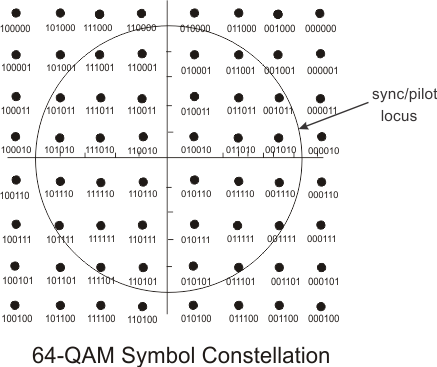Symbols Constellations (TEDS)
The TEDS Sync and Pilot symbols do not map to a standard QAM Quadrature Amplitude Modulation constellation. Instead, they are located on the Sync/Pilot Symbol Locus, where the exact angles vary by slot format (Normal Uplink, Normal Downlink, Random Access, Control Uplink). The effect is to estimate signal parameters over all subcarriers and to reduce the peak-to-average ratio of the composite signal. (Below: 4QAM (QPSK Quadrature phase shift keying), 16QAM, 64QAM.)



For simplicity and robustness reasons, the 89600 VSA software does not determine automatically the symbol or carrier's modulation type or operating bandwidth. Instead, the user specifies both the modulation type and bandwidth. Thus, the 89600 VSA software expects that all symbols (except for sync and pilot symbols) are of the same bandwidth and modulation type.
For test patterns and other uses, there are header symbols that are always transmitted in 4QAM (QPSK), which means they always appear in the corners of the constellation diagram, regardless of modulation type. These header symbols appear white on constellation diagrams when you clear the Header Symbols box and red when you select the box. Correspondingly, for the Composite Symbol Table, header symbols show on the table when you clear the box and show data when you select the box. When showing data, header symbols are limited to hex 0, 1, 2, and 3 since they are coded in 4QAM (QPSK).
See Also
